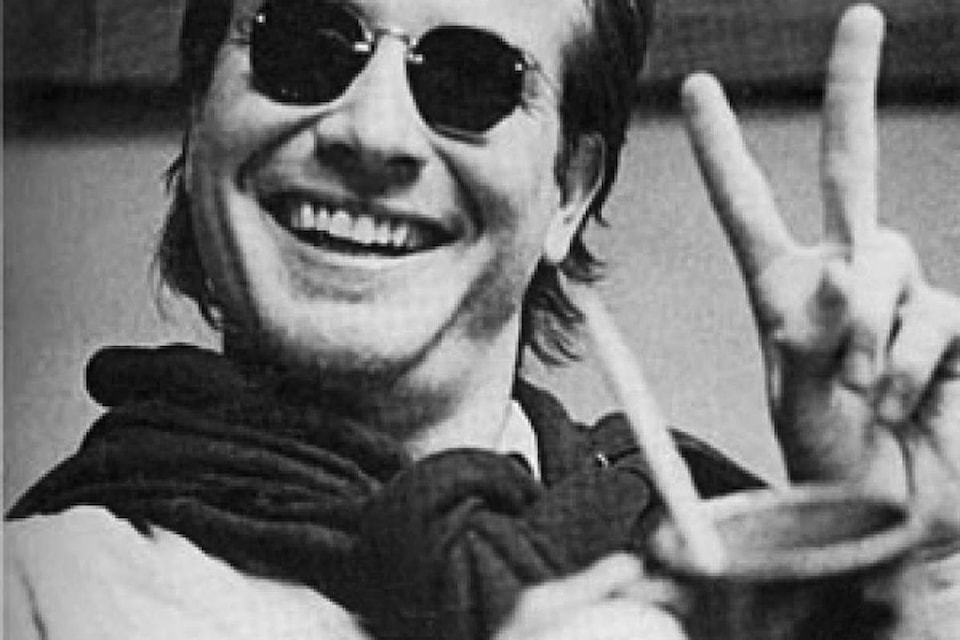Mike Selby
His name was Mr. Cheeseface.
A black and white dog of no particular breed, he appeared on the 7th greatest magazine cover all time—the January, 1973 issue of National Lampoon. On that now famous cover, Mr. Cheeseface has a gun pointed at his head, with the words “If you don’t buy this magazine, we’ll kill this dog.” The threatened mutt is glancing sideways at the gun, looking especially worried.
The photo took an entire day to produce. Mr. Cheeseface was far too happy being the center of the attention. It wasn’t until a replacement dog was brought in that he stopped grinning; giving the photographer a shot which would propel the magazine into the national spotlight.
‘National Lampoon’ was the brainchild of the funniest guy in the room—Douglas Kenney. The child of tennis pros, Kenny had a sense of humor leagues above anyone, which neither his parents nor his prep-school classmates appreciated. It wasn’t until he attended Harvard — class of ’68 — that others found him funny. Really, really funny. “His genius,” stated his girlfriend at the time, “was that he both completely embraced and rejected the mythology of American life.”
He found his voice in the University’s undergraduate humor publication, ‘The Harvard Lampoon.’ He also hammered out a novel titled ‘Teenage Commies from Outer Space.’ While it remains unpublished, his next work — a Tolkien spoof titled ‘Bored of the Rings — became one the year’s bestselling humor books. After graduation, Kenny rented a derelict house only a few blocks from Harvard, with a group of friends and like-minded graduates to launch a humor magazine titled ‘National Lampoon.’
It didn’t happen. Instead of working most people were drunk or stoned or naked and mostly all three. Realizing no work was getting done, Kenney moved operations to New York. It was the right call, and the very first issue of ‘National Lampoon’ appeared in April, 1970.
No one had seen anything like it. The only comparable publication at the time was ‘Mad’ — but this was a different league of humor altogether. Some reviewers thought it was a Canadian publication, as it had this “weird strain of detachment” to it.
The magazine made very little money until the Mr. Cheeseface cover. The following year Kenney published a special issue titled ‘The 1964 High School Yearbook.’ This issue alone sold 3 million copies, with Harper’s calling it “a literary masterpiece.’ That year would also see ‘The National Lampoon Radio Hour’ and an off-Broadway play titled ‘Lemmings’ that Kenney wrote and produced. The cast of ‘Lemmings’ took the comedy revue to television, making up the first cast of 1975’s ‘Saturday Night Live.’
It was Chris Miller, one of the magazine’s most gifted writers, who impressed Kenney the most. Miller had offered up an abandoned novel about a college fraternity which appeared in the magazine as ‘The Night of Seven Fires.’ Kenney felt it would make a great film, and he, Miller, and Harold Ramis (a joke writer at ‘Playboy’ and member of Chicago’s Second City) spent most of 1976 writing a screenplay for what would become ‘Animal House.’ Filmed for just under 3 million dollars, it grossed 140 million, making it the most successful comedy of all time.
“Doug was really a genius,” one of the magazine staff stated. “He was so far beyond what we were doing…always looking for the next level. He was passing through this stuff.” Nobody felt it was unnatural when he quit the magazine (selling his ownership) and moved to Hollywood to concentrate on films.
He teamed up with Harold Ramis again and wrote ‘Caddyshack.’ The film was a hit (not the hit ‘Animal House’ was) but Kenney was distraught. What he and Ramis wrote didn’t appear on film. Hollywood had rewritten it to the strengths of the stars in it. Kenney responded by showing up to the press conferences drunk. One of the film’s stars — Chevy Chase — suggested he should take a break from the Hollywood machinery, and stop drinking. Kenney flew to Hawaii for a two-week vacation.
Police found his body at the bottom the Hanapepe Lookout on August 27th, 1980. He had just turned 33. While gossip about suicide and foul play made it rounds, the forensic investigation concluded he had accidently slipped while hiking. Or, as was said at his funeral—“there was a sign up there that said DO NOT GO BEYOND THIS POINT. Doug would have said, “Do they mean over here?”
(‘National Lampoon’ published it’s final issue in November of 1998. The company licences its name out for very little, so that is why there have been 72 really horrible films with “National Lampoon” attached to them.
As for the photogenic Mr. Cheeseface, he was sadly (and ironically) shot and killed in 1976, but a hunter who claimed the dog was chasing deer.)
Mike Selby is Programs & Community Development Librarian for the Cranbrook Public Library
